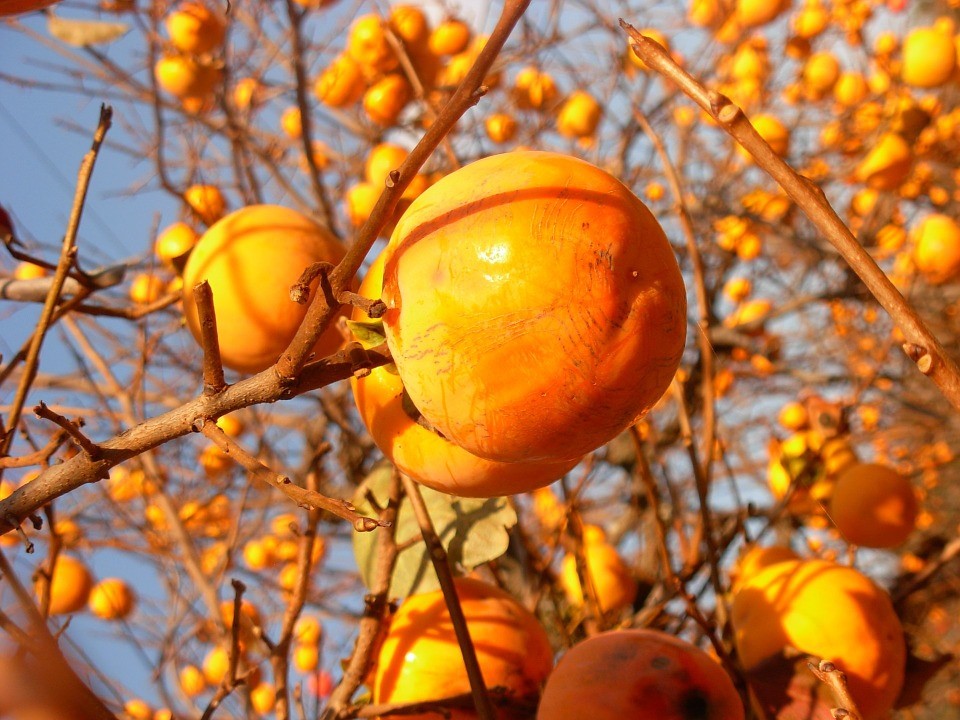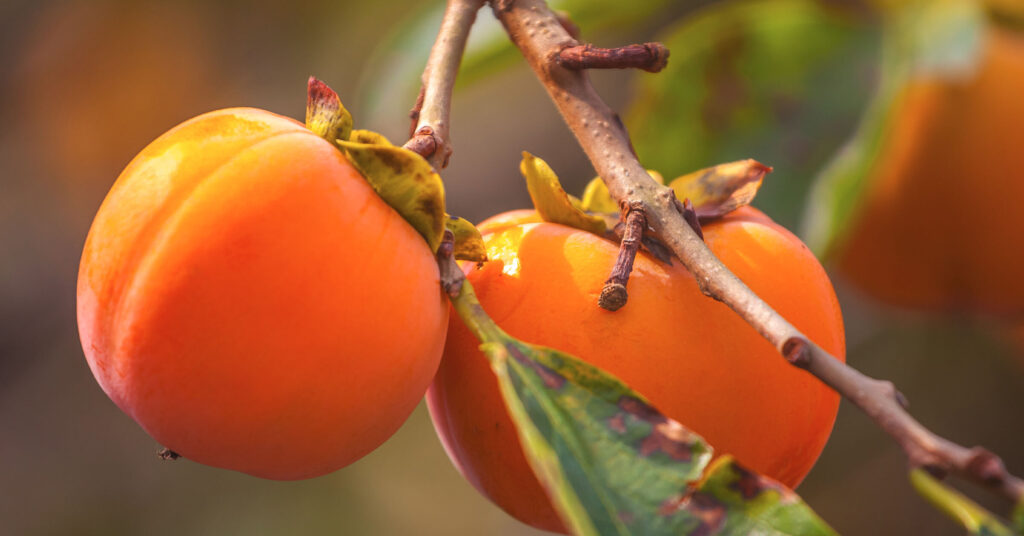
italian persimmons Free Photo Download FreeImages
The first Italian persimmon orchards were established at the beginning of the 20th Century in Campania Region (Provinces of Salerno, Napoli and Caserta). Since then, persimmon cultivation spread and developed differently in the south and north of Italy (namely in Emilia-Romagna Region), reached a yearly production of about 250,000 t in the.

How to eat Italian persimmons The Polenta Diaries
Method: Boil water for the pasta. Remove the skin of the persimmon, removing any seeds and blending the pulp until you reach a creamy, well-blended consistency. Cut guanciale into cubes and brown in a large saucepan until crispy. Once water reaches a boil, add salt and pasta.

" Pronto!" Persimmons/Cachi Umbria photobydperry loves_united
Italy has been leading the European persimmon production along the last century, with a peak of harvested fruits of about 250,000 t in the years 1940-1945. However, the Italian contribution to the production of persimmons in the world and in Europe has been significantly decreasing over the last 60 years.

Italy’s Best Culinary Delights in Autumn Essential Italy
Persimmons; one of fall's made in Italy goodies Mediterranean diet Rosalba Lettieri Together with the chestnuts and the pomegranates, the typical fruits of the fall are persimmons which come from Diospoyros kaki, a fruit plant from East Asia belonging to the the family of the Ebenecee.

Persimmon fruit tree, in late autumn, Umbria, Italy Stock Photo Alamy
Italian persimmon cultivation dates to the beginning of the XXth century, when the first orchards were established in the Campania region (southern Italy). Around 1946 the yearly production.

Persimmons winter's versatile, colorful fruit Italian Lessons
Italian persimmon cultivation dates to the beginning of the XXth century, when the first orchards were established in the Campania region (southern Italy). Italian persimmon cultivation dates to the beginning of the XXth century, when the first orchards were established in the Campania region (southern Italy). Around 1946 the yearly production reached 250,000 1, but it decreased to about.

Photo of Persimmon tree. Fruit farms, South Tyrol Trentino, Italy
Abstract: Italian persimmon cultivation dates to the beginning of the XXth century, when the first orchards were established in the Campania region (southern Italy). Around 1946 the yearly production reached 250,000 1, but it decreased to about 50,000 1 in later years. Italian cultivation is based mostly on 'Kaki Tipo' and, recently,

Little Suns The Tradition of Persimmon Trees in Italy
Vanilla Kaki persimmons are botanically classified as Diospyros kaki, along with other persimmon varieties. Vanilla Kaki persimmons are one of 200 known species of persimmons, and are a relatively recent variety that were first grown in Italy. The provinces of Salerno, Napoli and Caserta are particularly known to be persimmon-growing regions.

Little Suns The Tradition of Persimmon Trees in Italy
Italy has been leading the European persimmon production along the last century, with a peak of harvested fruits of about 250,000 t in the years 1940-1945. However, the Italian contribution to the production of persimmons in the world and in Europe has been significantly decreasing over the last 60 years. In 1970 the Italian production (60,000.

Photo of Persimmon fruits. Fruit farms, South Tyrol Trentino, Italy
What are cachi, you might ask? It's the Italian word for persimmons - one of those unique, undiscovered fruits. I was recently surprised to learn that one of our dear family friends happens to grow persimmons right in her very own backyard in West Harrison, New York.

A Bunch of Colorful Persimmon Fruits Cachi Frutta in Italian Name Rome
The persimmon is a strange fruit. It requires patience and, at the same time, it doesn't tolerate delays. It takes ages to turn soft and juicy on the inside and then as soon as it is ready to eat, you blink and it has morphed into mush.

How To Eat Cachi (Persimmons) Italy Travel More
Persimmon production reached 47,615 tonnes in 2018 in Italy, according to Faostat. This is 4.15% less than in the previous year. Historically, persimmon production in Italy reached an all time high of 78,400 tonnes in 1984 and an all time low of 39,149 tonnes in 2014. Download Sample. $2.99. Buy Persimmon Production data for Italy..

Photo of Persimmon tree. Fruit farms, South Tyrol Trentino, Italy
For the crostata: Preheat oven to 450 degrees. Remove the dough from the refrigerator and place on a floured surface. Add flour to the surface of the dough. Flatten the dough out into a round disk. Roll out into a large circle with a rolling pin. If the dough sticks to the rolling pin or the rolling surface, add more flour.

persimmons, among the seasonal delights Made in Italy
Italian persimmon cultivation dates to the beginning of the XXth century, when the first orchards were established in the Campania region (southern Italy). Around 1946 the yearly production.

Persimmon, near Todi, Umbria, Italy Stock Photo Alamy
In Italy, where the cultivation of persimmon started about one century ago, the production of persimmon shows a negative trend in the last sixty years. In the decade 1960-1970, the average yearly production was about 73,000 t while in the period 2010-2019, it dropped to about 49,000 t. The average yield were 18 and 19 t/ha for the two.

Photo of Persimmon fruits. Fruit farms, South Tyrol Trentino, Italy
This paper explores the changes in the production of persimmon in Italy taking into account cultivars, and rootstocks, propagation techniques, planting distances, and training systems (from vase to palmette), pest control and postharvest (from early stages to current practice).